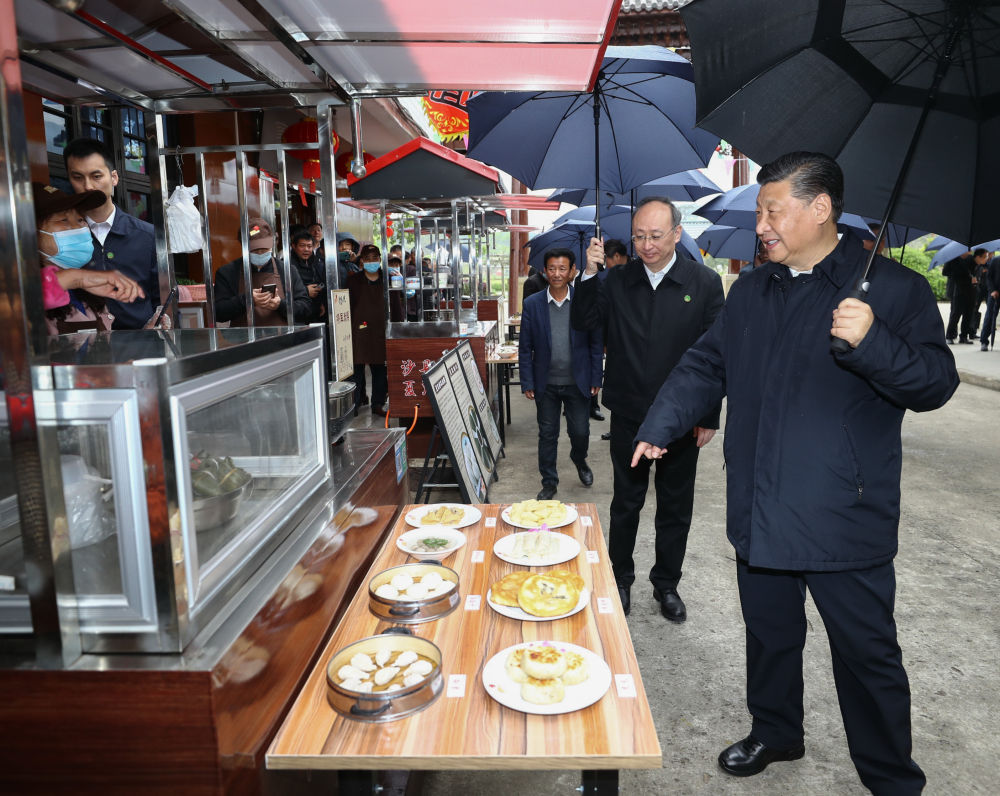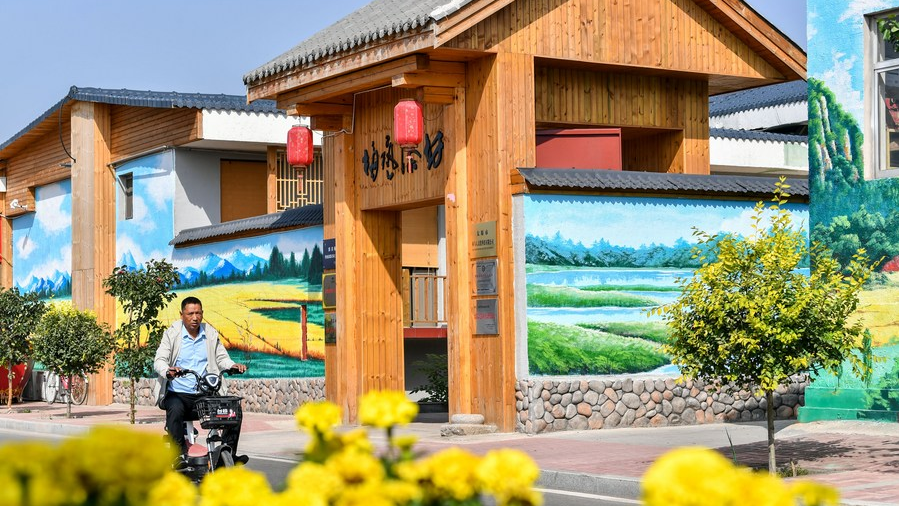
Chinese President Xi Jinping talks with local people while visiting Yubang Village of Xiamao Town in Shaxian District, Sanming City, southeast China's Fujian Province, March 23, 2021. /Xinhua
Chinese President Xi Jinping talks with local people while visiting Yubang Village of Xiamao Town in Shaxian District, Sanming City, southeast China's Fujian Province, March 23, 2021. /Xinhua
Editor's note: The year 2023 is the first full year for implementing the guiding principles of the 20th National Congress of the Communist Party of China. Ahead of this year's Two Sessions, China's key annual political meetings, CGTN presents "China Marches On," a special series that takes an in-depth look at the country's endeavors in advancing Chinese modernization.
Something of a living revolution is taking place in China's rural areas, according to a recent report by a renowned Chinese university. The report analyzed over 100,000 questionnaires and nearly 5,000 blogs discussing the state of the countryside, collected when tens of millions of Chinese returned home during the Spring Festival.
Residents of rural areas as well as their counterparts in cities now have the material basis for a good life, and a new way of life is taking shape, though some problems remain apparent, said the Wuhan University report.
As the report to the 20th National Congress of the Communist Party of China (CPC) has made it clear, Chinese modernization is the modernization of common prosperity. Without rural residents' getting well-off, there would be no prosperity for all.
Noting that the most challenging and arduous tasks China faces in building a modern socialist country in all respects remain in the rural areas, Xi Jinping, while delivering the report last October, vowed to make more efforts to advance rural revitalization across the board.
More income channels
With a wide variety of choices ranging from dumplings to wontons and noodles, Shaxian Delicacies has grown into an iconic "national brand" from a small business originating in Shaxian District of Sanming City, southeast China's Fujian Province.
Once a scattering of mom-and-pop eateries, Shaxian Delicacies is now a food chain with around 88,000 storefronts worldwide and more than 300,000 employees, generating a yearly turnover of nearly 50 billion yuan (about $7.7 billion).
When visiting Yubang, the village where the Shaxian Delicacies brand originated, during an inspection tour in Fujian Province in 2021, President Xi underlined that the key to rural vitalization lies in developing industries that suit local conditions and benefit local people.
With its menu variety, widely popular taste and affordable prices, Shaxian Delicacies has become a pillar industry in Shaxian. Today, more than 90 percent of Yubang's working population is in the snack business, working in cities across the country.
This boom helped increase Shaxian's rural per capita annual income from 2,805 yuan in 1997 to 21,855 yuan in 2020. It has also helped lift more than 200,000 people in Shaxian and its adjacent areas out of poverty amid the country's vigorous anti-poverty efforts.
The achievement of Shaxian is a vivid epitome of the changes taking place across China. Annual per capita disposable income for Chinese farmers in 2022 increased to 20,133 yuan (about $2,955), surpassing the milestone of 20,000 yuan for the first time, said the Office of the Central Rural Work Leading Group in February.
In 2022, the growth of rural residents' incomes outpaced that of urban residents for the 13th consecutive year, and the income ratio between urban and rural residents dropped from 2.88 in 2012 to 2.45 in 2022, further narrowing the urban-rural income gap, according to the office.

A view of Liujiabao Village in Taiyuan, north China's Shanxi Province, October 1, 2021. /Xinhua
A view of Liujiabao Village in Taiyuan, north China's Shanxi Province, October 1, 2021. /Xinhua
A beautiful, harmonious countryside
In its first document of 2023, the Chinese government outlines the year's tasks for advancing rural revitalization across the board, with issues related with agriculture, rural areas, and farmers high on the agenda for 20 consecutive years since 2004.
The policy statement, seen as an indicator of policy priorities, highlighted the need to build a beautiful and harmonious countryside that is a desirable place to live and work.
Xing Qingsong, known as the "king of crab farming" in east China's Jiangsu Province and a deputy to the National People's Congress, said he will propose building a national crab seed industry to help promote the revitalization of rural industry, leveraging know-how and innovation to attract young people back to the countryside.
"How can we enable villages to offer the same education, medical and living facilities as the city so that the young people can stay there?" Xing asked. "This is something I will focus on in years ahead."
As the Wuhan University report has concluded, these changes to life in rural China have improved material conditions for residents, with farmers having moved from a society of scarcity into one of abundance. No longer struggling for survival, people there are now in pursuit of a better life.